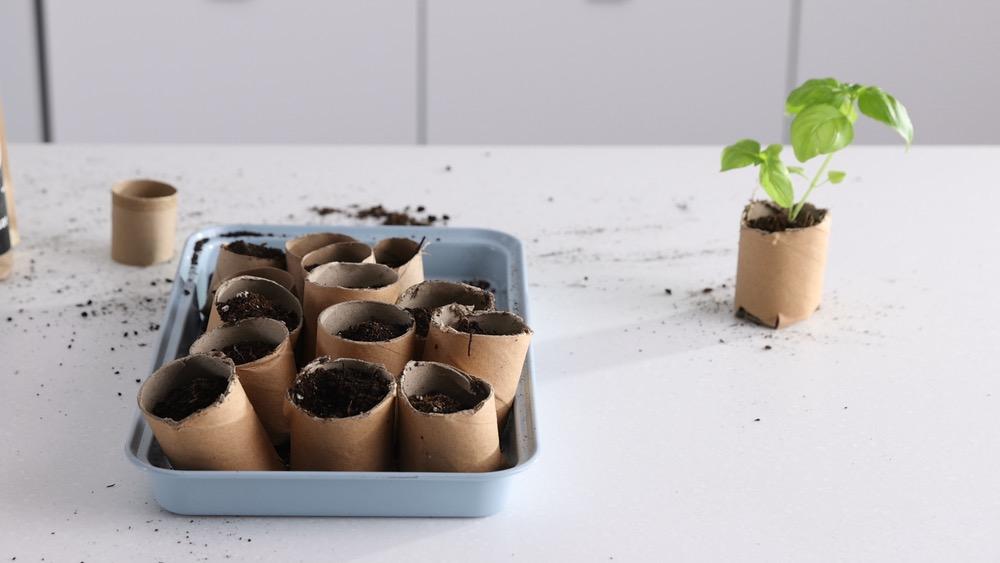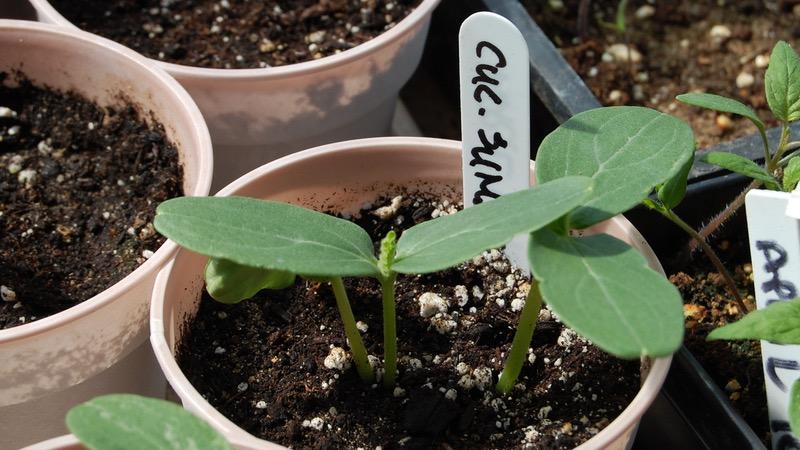They served you well over the summer months. Your hibiscus, Dipladenia and dracaena (among others) provided great service during the gardening season, but their time outdoors is over. That is, if you want to enjoy them indoors for the off-season and have them survive to spend another season outdoors next summer.

Growing tropical plants outdoors has been increasing in popularity in Canada for several years. It amazes us how many people buy an expensive flowering plant for the patio, to enjoy for our short growing season, only to let Jack Frost nip it in the bud (often while in its prime), bite the dust and end up at the end of the driveway for the “green bin” truck to haul away. There is no need to treat your tropical plants like a pumpkin. In fact, if you are the least bit inclined to resourcefulness, autumn is the time to give your tropical plants attention, which means bringing them indoors and then some.
Autumn is a good time of year to inspect all your topical plants, indoors and out. Top up the soil if it is depleted, repot them, and clean them up for the “indoor” season ahead. Green plants clean the air of toxins, add moisture during a dry period, and warm up a room by just being there. Best to store them indoors than throw them away to the curb. Take good care of your tropical plants in the fall, and they will take good care of you come winter.

When do the plants need to come inside?
As evening temperatures drop, the cell structure in the leaves of heat-seeking plants begins to shut down. Frost-tender annuals will just die with the frost: Some will tolerate frost for a little while, but others are overly sensitive to the slightest amount. Tropical plants are the same, except that when you bring them indoors after they experience cool temperatures, several of their leaves turn yellow and drop off. This is not all bad, as many will grow back again. Indeed, a Ficus benjamina generally drops leaves in fall anyway, in response to the shortening days.
Place sun-loving tropical plants in the sunniest windows that you have indoors. Note that by midwinter, a south-facing window will receive only 500 foot-candles of natural light, while the same window will have received over 2,000 foot-candles back in June, when the sun was high in the sky and the days were much longer. We mention this so that you will understand why your tropical plants do not perform indoors nearly as well as they did while out doors in the summer.
For most tropical plants, it is best to lower your expectations and be pleased when they merely survive the long, cold Canadian winter. The metabolism of indoor plants slows down in the “off-season.” As a result, we recommend that you water much less than you did in the summer. Push your finger into the soil and check for dryness about 3 cm (1 1/2 inches) deep. If it is dry, water it. Do not allow water to accumulate at the base of the pot or in the saucer, as this promotes root rot.

What to Know about Bugs
Inspect a tropical plant for bugs and disease before you haul it indoors. Carefully look on the leaf underside and run your fingers gently over it. If it feels like very fine sandpaper, your plant has spider mites. You can eliminate them with a thorough application of insecticidal soap. Once indoors, continue to spray with room temperature water, making sure that you cover the bottom side of the leaves for the best effect. In time, the mites will disappear, as they thrive in hot, dry conditions.
The soil, too, may have some bugs in it: Gently pull the plant’s root mass out of its container and inspect it for creepy-crawlies. Centipedes, millipedes, sowbugs and the like can set up shop there over the summer. They are harmless, so just hand-pick them and place them in the garden, where they belong.
If you notice tiny flies coming from the soil after you have brought the plant into the house, those are likely whiteflies; if they are brown, you have fungus gnats. Keep watering to a minimum (as little as possible), since both whiteflies and gnats thrive in moist soil. Consider watering from the bottom when you do water, and use yellow sticky traps to catch those trying to find a more ideal egg-laying location.

Yes, you need to repot. Here’s how
While you have your tropical out of the pot, have a good look for overgrown roots. Your plant has just completed the most aggressive growth cycle of the year — that is why it looked so good outdoors this summer. Overgrown roots push their way out of the drainage holes in the bottom of the pot, circle around the surface of the soil, and generally tighten the entire root mass within the pot, making it very difficult to remove the plant in the first place. If this sounds like your tropical plant, repot it now while you are outdoors, as this is a messy job.
Pull the soil away from the existing roots.
Don’t be too gentle about this. If you were pruning the top of the plant, you would cut it back by up to a third and think nothing of it. Do the same with the roots: Scarify them and pull them out until you have a loose, hanging mass of roots that will be looking for a new home. Sometimes, we do this with an old fork or a sharp kitchen knife. Once, Mark had a clivia that was so totally root-bound that there was virtually no soil left in the pot. In scarifying those roots, he got rid of a lot of his own parental frustrations, mostly of course, with Ben’s sisters (joke).
The pot that you replant your tropical in should be about one size larger than the one that you remove the plant from.
In other words, a 10-inch pot should be sized up to a 12-inch one. Place a couple of large, flat stones or broken clay pottery over the drainage hole in the bottom of pot. This opens up the soil around the drainage hole to allow oxygen in and hold the soil where it belongs (in the pot).
Use quality potting mix.
This is going to be the home of your valued plant roots for some time, so make it a good one. Once you have the plant positioned in its new pot, use a wooden ruler or paint stir stick to press the soil around the perimeter of the roots. The idea is to remove any large air pockets around the roots, which can cause excess moisture to accumulate, promoting disease.
Mark Cullen is an expert gardener, author, broadcaster and tree advocate
and holds the Order of Canada. His son, Ben, is a fourth-generation
urban gardener and a graduate of the University of Guelph and Dalhousie
University in Halifax. Follow them at markcullen.com, @MarkCullen4
(Twitter) and @markcullengardening (Facebook) and look for their latest book, Escape to Reality.
Follow them at markcullen.com, @MarkCullen4, facebook.com/markcullengardening and biweekly on Global TV’s national morning show, The Morning Show.













